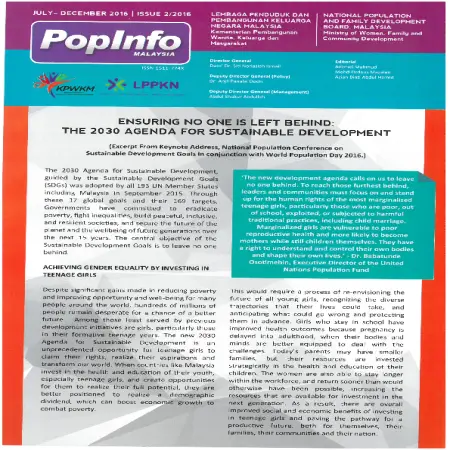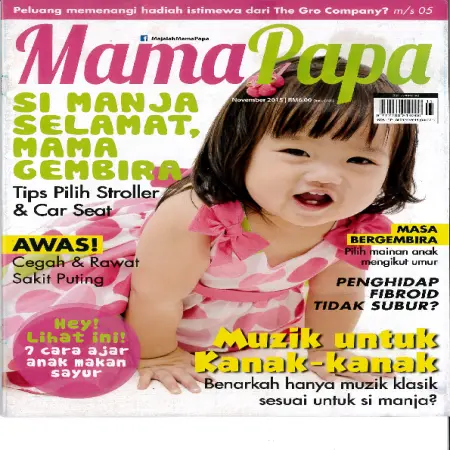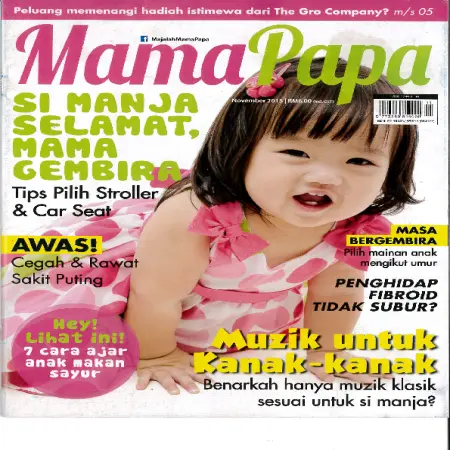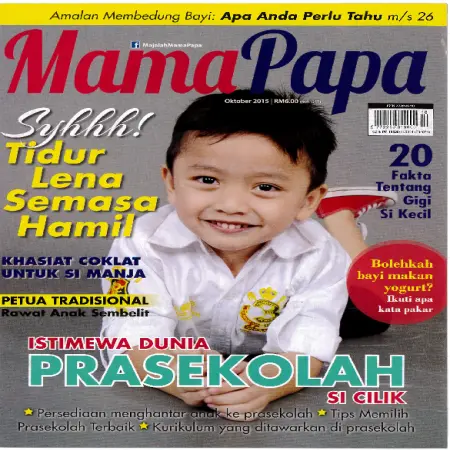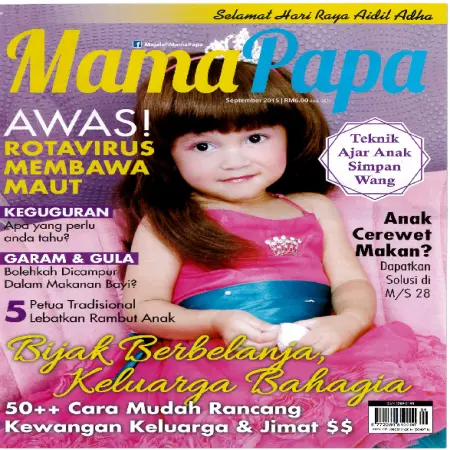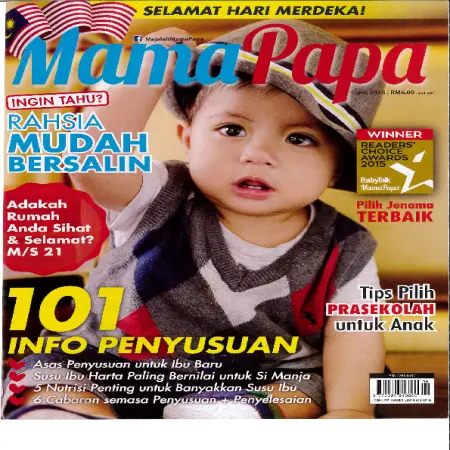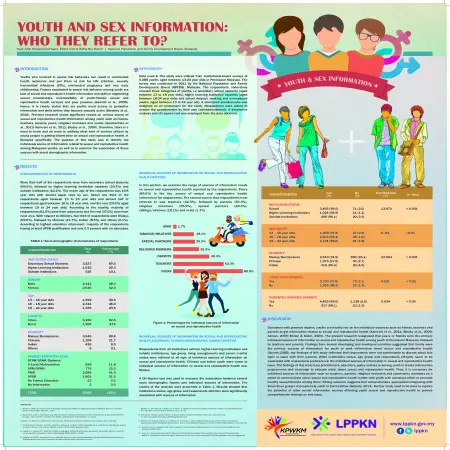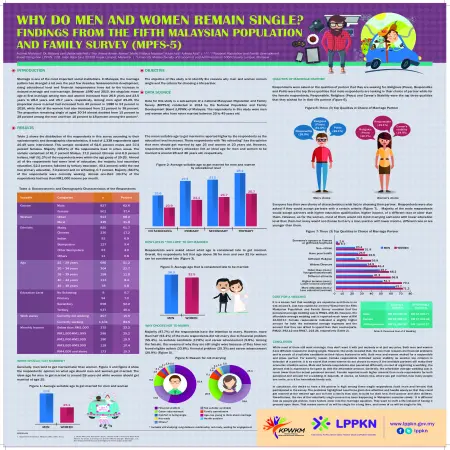Browse by Type
|
|
Preventing teenage pregnancies
Item Type: Article
Editor:
Year: 00/00/2016
Abstract: An average of 18,000 teenagers in Malaysia get pregnant each year, 25% or about 4,500 cases involved out-of-wedlock pregnancy. Th e Fifth Malaysian Population and Family Survey conducted by NPFDB revealed that 4.8% of all teens have had sex at least once. The survey also found that Malaysian teens had inadequate understanding of matters related to sexuality/ reproductive health and limited knowledge when it came to sexual relationships. Afraid, alone and ill-informed, teens who get pregnant out of wedlock often opt for the easiest way out like dumping the baby or subjecting themselves to unsafe abortion. Social rejection from families and the community also rob the girls from the support and assistance they desperately need.
|
|
|
|
|
|
Ensuring no one is left behind: the 2030 agenda for sustainable development
Item Type: Newsletter
Editor:
Year: 00/00/2016
Abstract: The 2030 Agenda for Sustainable Development, guided by the Sustainable Development Goals (SDGs) was adopted by all 193 UN Member States including Malaysia in September 2015. Through these 17 global goals and their 169 targets, Government have committed to eradicate poverty, fight inequalities, build peaceful, inclusive, and resilient societies, and secure the future of the planet and the well being of future generations over the next 15 years. The central objective of the Sustainable Development Goals is to leave no one behind.
|
|
|
|
|
|
Tips beriadah bersama anak kecil
Item Type: Article
Editor:
Year: 00/12/2015
Abstract: Naturally little children have a wide variety. It can even dampen the atmosphere of a planned vacation. Some preparation tips can be practiced by parents before taking the child to go on vacation such as adequate and appropriate clothing, medicines, small bags, important documents, stroller and others.
|
|
|
|
|
|
Lima teras keluarga bahagia
Item Type: Article
Editor:
Year: 16/11/2015
Abstract: Each of us has our own values to describe a happy family. Happiness in the family is very important and it is the goal of all of us to build family institutions. National Population and Family Development Board (NPFDB) has outlined five (5) Happy Family Thrusts based on the concept of KASIH, namely Love, Morality, Health, Knowledge and Harmony. Let there be different recipes and molds of pure values that are practiced in the family but the purpose is to create a happy family.
|
|
|
|
|
|
Ikat anak: siksa atau keselamatan
Item Type: Article
Editor:
Year: 10/11/2015
Abstract: The average trend in Asia, especially in Malaysia, parents prefer to hold or support the baby on the grounds that it is easier to monitor, breastfeed and put them to sleep. Many parents seem to assume that sitting on their lap is enough to protect their baby from accidents and upset to see a toddler lying tied up in a car seat. Based on statistics, the use of child safety seats and travel systems is not taken seriously by most parents in Malaysia. According to a study conducted by MIROS, babies will be thrown forward at high speeds even if held by an adult during a vehicle collision even with only 30km per hour. Most will be killed as a direct result of the impact.
|
|
|
|
|
|
Antara hak dan tanggungjawab membimbing anak bertanggungjawab
Item Type: Article
Editor:
Year: 00/10/2015
Abstract: Rights can be defined as belonging to each individual while responsibilities are something that must be exercised. Kids who like to take people’s stuff have impulsive traits. Impulsive means someone who has a strong urge to have something. When the desire peaked, he had to get it right away. Some tips are shared to parents when faced with this situation such as encouraging children to ask permission every time they want to borrow items that do not belong to them, explaining to children about the difference between borrowing and taking other people's items without permission and consistent and firm in correcting actions. misconduct of children.
|
|
|
|
|
|
Bijak berbelanja, keluarga bahagia
Item Type: Article
Editor:
Year: 00/09/2015
Abstract: Building a family requires knowledge of proper financial management. Both before and after marriage, financial problems will always linger in our minds, especially when family members are increasing. Seven (7) quick guides on family financial management using SmartBelanja Module for mutual benefit i.e. intention to save, have fixed and additional income, distribution of income money immediately for certain payments, make savings, always discuss with family members to avoid wastage and always pray that sustenance is always a blessing.
|
|
|
|
|
|
Aduh! Sakit kepalaku: membimbing anak bertanggungjawab
Item Type: Article
Editor:
Year: 00/08/2015
Abstract: Every child born into this world is a perfect and holy gift of God. Children are like white cloth and it is the parents who are responsible for shaping the life of their children. Every child born is in perfect condition and has great potential to be an excellent human being. Fatherhood and Motherhood The LPPKN Family@Work Module provides guidance to participants on the style of fatherhood, namely Authoritarian, Permissive, Neglect and Authoritative. The fact is, as a parent the goal is to raise children to be happy, healthy and successful.
|
|
|
|
|
|
Youth and sex information: who they refer to?
Item Type: Scientific Poster
Editor:
Year: 00/07/2015
Abstract: Youths who involved in sexual behaviors can result in unintended health outcomes and put them at risk for HIV infection, sexuality transmitted infections (STIs), unintended pregnancy and very early childbearing. Factors associated to sexual risk behavior among youth are lack of sexual and reproductive health information and skills in negotiating sexual relationships, inaccessibility of youth-friendly sexual and reproductive health services and peer pressure (Kaestle et Al., 2005). Hence, it is clearly stated that our youths need access to protective information and skills before they become sexually active (Bleakley et al., 2010) Previous research shows significant results on various source of sexual and reproductive health information among youth such as friends, teachers, parents, peers, religious members and media (Gombachika et al.,2013; Kamrani et al., 2011; Bleaky et al., 2009) therefore, there is a need to know and do more address what kind of sources utilized by young people in getting information on sexual and reproductive health, in Malaysia specifically. The purpose of this study was to identify the individuals source of information related to sexual and reproductive health among Malaysia youth, as well as to examine the association of these sources with social demographic information.
|
|
|
|
|
|
Why do men and women remain single? Findings from the Fifth Malaysian Population and Family Survey (MPFS-5)
Item Type: Scientific Poster
Editor:
Year: 01/07/2015
Abstract: Marriage is one of the most important social institutions. In Malaysia, the marriage pattern has changed a lot over the past few decades. Socioeconomic development, rising educational level and financial independence have led to the increase in delayed marriage and non-marriage. Between 1980 and 2010, the singulate mean age at first marriage among men and women increased from 26.6 years and 23.5 years to 28.0 years and 25.7 years, respectively. Among men aged 25-29, the proportion never married had increased from 40 percent in 1980 to 53 percent in 2010, while that of the women had also increased from 21 percent to 38 percent. The proportion remaining single at aged 30-34 almost doubled from 15 percent to 28 percent among the men and from 10 percent to 18 percent among the women. The objective of this study is to identify the reasons why men and women remain single and the criteria for choosing a life partner.
|
|
|
|






